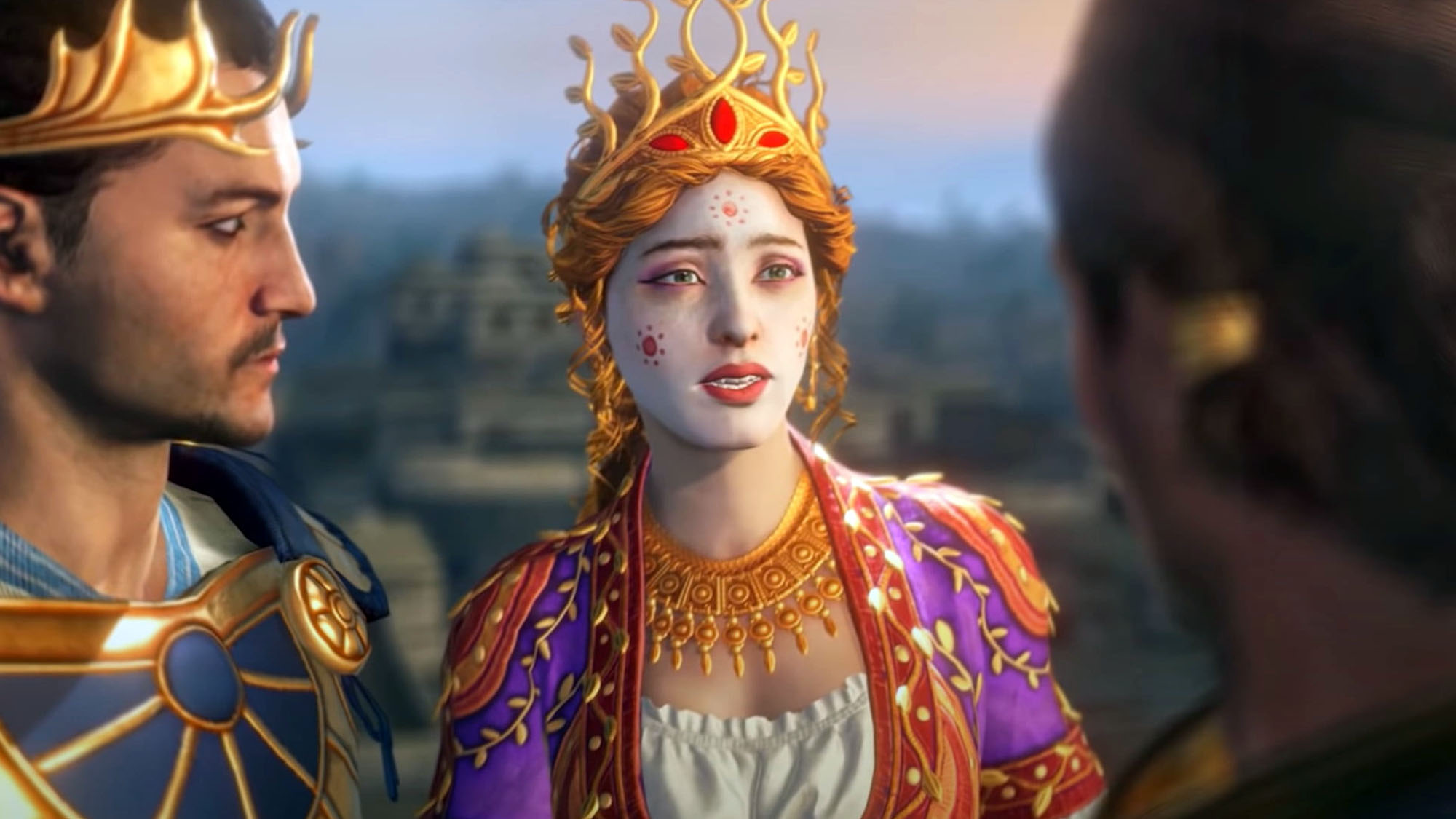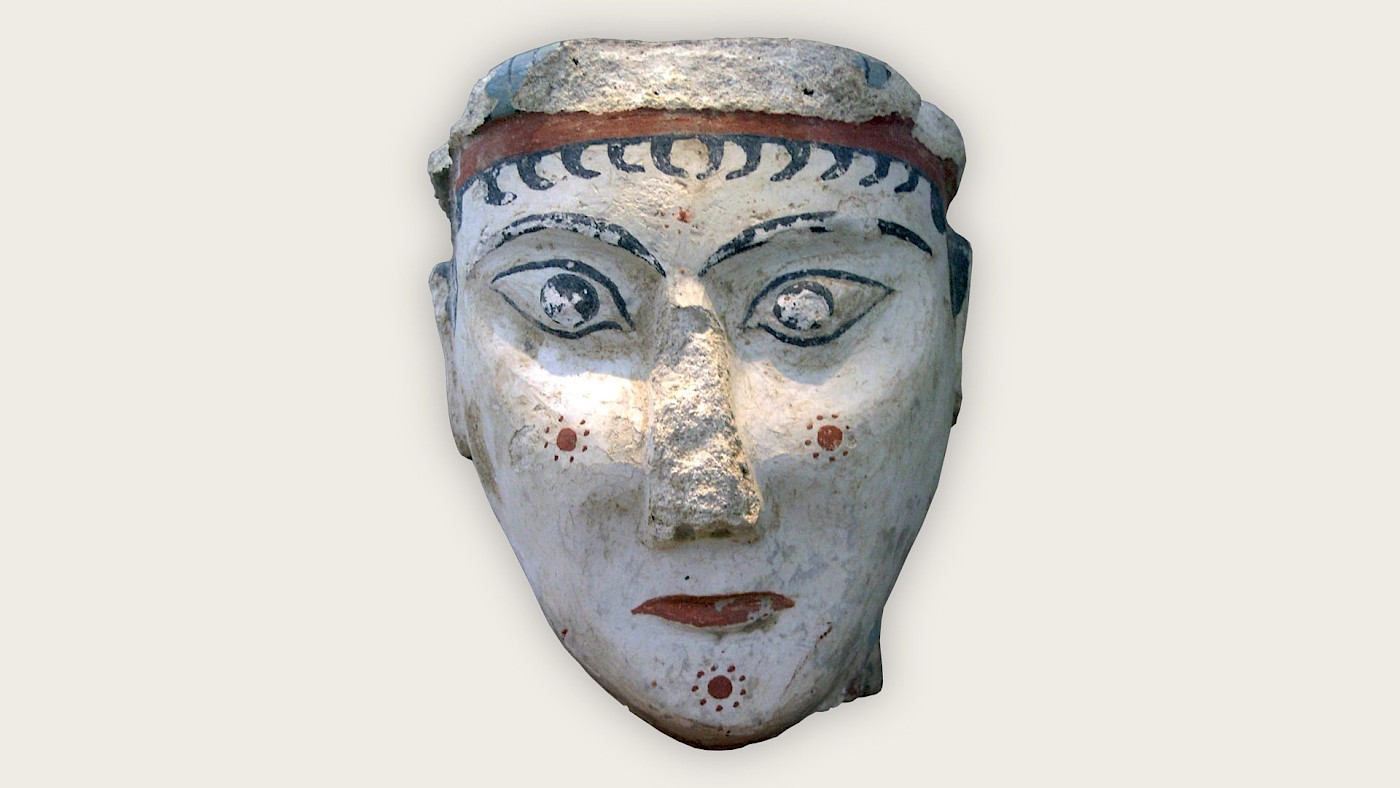The National Archaeological Museum in Athens houses an almost life-size plaster head (h. 16.8 cm), a picture of which is depicted at the top of this article. The object was found by archaeologist Christos Tsountas in the ancient citadel at Mycenae in 1896. It is dated to ca. 1250-1200 BC, when Mycenae was at the height of its power.
The head consists of a plaster core covered with a finer layer of plaster that was subsequently painted in a manner similar to Bronze Age Aegean frescoes. The skin of this figure has been left the natural white colour of the plaster. White skin is generally interpreted to have been used to represent women in Aegean art.
The face of a woman
The flat headdress, which has been damaged, also suggests that the figure was intended to be female. Such headdresses or caps were most likely adopted on the mainland from Crete. For example, one of the women on the sarcophagus from Agia Triada seems to wear something similar. Paul Rehak points out that similar caps were sometimes also worn by sphinxes (2005, p. 272).
Some care was taken to model the features of the face, but by and large the head is relatively flat, something that is perhaps more obvious when the object is seen in person or by looking at pictures taken from the side. The neck is irregularly broken; some beads of a plaster necklace are barely visible. There must originally have been more to this figure, but the head and part of the neck are all that remain.

The eyes have a penetrating, stern gaze. Equally striking are the red rosettes painted on the forehead (barely visible), the cheeks, and the chin. Such markings have a long history in Aegean, dating back to the Early Bronze Age. They indicate some form of painted decoration or tattoos. However, since tattoos don’t seem – on the whole – to have ever been very popular in the Aegean, the latter is perhaps less likely. (There are some Cycladic figurines with markings that have been interpreted as possible tattoos, but again the evidence isn’t very clear.)
Who or what does this head represent? Some have argued that the head must have been part of a sphinx; others argue that it represents either a mortal woman of some sort, or a goddess. Here the findspot might be of some help. The head was retrieved from an area in Mycenae’s citadel that has been dubbed the “Cult Centre”.
The Cult Centre at Mycenae
The Cult Centre is located on the western slope of the citadel. At its peak, in the middle of the thirteenth century BC, the complex consisted of multiple structures: Shrine Gamma, a megaron (a large room with, in this case, large storage basements), the Temple complex (a shrine), and the Room with the Fresco complex (another shrine). Across from these structures is a large house (i.e. Tsountas’ House).
The Cult Centre suffered extensive damage in ca. 1230 BC, probably as the result of an earthquake, and much material was left in the ground. Most of the complex was re-used afterwards, with the exception of the Room with the Fresco Complex, which was sealed off, probably because it would have been too difficult to repair and/or clean out.
The plaster head fits with the other apparently religious objects retrieved from the Cult Centre. Therefore, it most likely represents the head of a goddess. Paul Rehak compares the head with the statues from Agia Irini and suggests this one might have been similar, but it could equally well have belonged to a standing or sitting figure.
This is not the only plaster head from Mycenae (cf. Palaiologou 2015), but it is among the largest and well-preserved remains of plaster figures to have survived the Mycenaean Bronze Age. If this is a goddess, the question arises which goddess? Could it be Athena or Hera? Or perhaps it’s Artemis? Or someone else entirely? We simply do not have the answer.
Further reading
- Elizabeth French, Mycenae: Agamemnon’s Capital (2002).
- Heleni Palaiogolou, “A female painted plaster figure from Mycenae”, H. Brecoulaki, J.L. Davis, and S.R. Stocker (eds.), Mycenaean Wall Painting in Context (2015), pp. 95-125.
- Paul Rehak, “The ‘sphinx’ head from the Cult Centre at Mycenae”, in: A. Dakouri-Hild and S. Sherratt (eds), Autochthon: Papers Presented to O.T.P.K. Dickinson on the Occasion of His Retirement (2005), pp. 271-275.
- Christos Tsountas, “Κεφαλή εκ Μυκηνών”, Aρχαιολογική Εφηµερίς 1 (1902), pp. 1-10.
